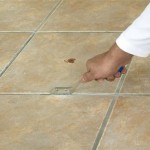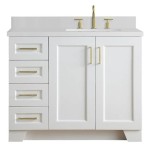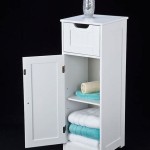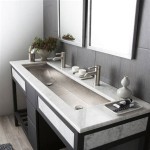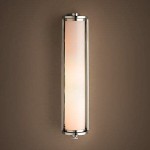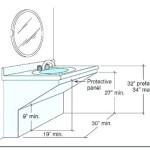Commercial Bathroom Sinks Revit: Design and Modeling for Professional Environments
In the world of architectural design, the use of Building Information Modeling (BIM) software, such as Autodesk Revit, has become indispensable. BIM software empowers designers to create detailed models of structures, ensuring accurate and efficient workflows. When it comes to designing commercial bathrooms, incorporating commercial bathroom sinks into Revit models is crucial for achieving a cohesive and functional space. This article explores the process and benefits of modeling commercial bathroom sinks within Revit, highlighting the importance of this practice for architects and designers.
1. Creating Accurate Sink Models: Ensuring Functionality and Aesthetics
One of the primary benefits of modeling commercial bathroom sinks in Revit is the ability to create accurate and detailed representations of these fixtures. Designers can leverage Revit's robust tools to define the exact dimensions, materials, and configurations of various sink models. This detailed approach allows for precise placement within the bathroom layout, ensuring proper clearances, accessibility, and ergonomic considerations. Moreover, by incorporating visual properties such as materials, finishes, and textures, designers can achieve a realistic representation of the sink's appearance, contributing to the overall aesthetic appeal of the bathroom design.
Furthermore, the ability to model sinks with their associated plumbing fixtures, such as faucets, drain assemblies, and supply lines, adds further realism to the design. By integrating these elements into the model, designers can visualize the complete plumbing system within the context of the bathroom, enabling them to identify potential conflicts, optimize piping layouts, and ensure seamless installation. This comprehensive approach ensures that the sink design aligns with the building's plumbing infrastructure, minimizing potential issues during construction.
2. Streamlining Communication and Collaboration: Facilitating Efficient Project Delivery
Modeling commercial bathroom sinks in Revit facilitates seamless communication and collaboration between architects, designers, contractors, and clients. The BIM model serves as a centralized platform for sharing information related to the sink design, including dimensions, specifications, materials, and installation details. This shared understanding minimizes misinterpretations and inconsistencies, ensuring everyone involved is working from the same set of data. Moreover, Revit's ability to generate detailed drawings and schedules automates the documentation process, saving time and reducing errors.
The collaborative nature of Revit also allows for efficient design reviews and feedback processes. Stakeholders can easily visualize the sink design within the context of the entire bathroom, enabling them to provide valuable input and suggestions. This iterative approach helps to refine the design, incorporating the needs and preferences of all parties involved. By promoting transparency and collaboration, Revit models contribute to a smoother project delivery, minimizing potential delays and conflicts.
3. Enhancing Building Performance and Sustainability: Optimizing Water Usage and Design
Modeling commercial bathroom sinks in Revit enables designers to explore different sink types, configurations, and technologies, ultimately leading to more sustainable and efficient bathroom designs. The model allows for evaluating the water usage of different sink options, allowing designers to choose fixtures that minimize water consumption. For example, incorporating low-flow faucets or water-efficient sink designs can significantly reduce water usage, contributing to both environmental sustainability and cost savings.
Additionally, Revit's analysis tools can be used to assess the impact of different sink designs on the overall bathroom ventilation and plumbing systems. By simulating airflow patterns and analyzing water flow, designers can identify potential areas of inefficiency and optimize the bathroom's design for optimal performance. This proactive approach ensures a comfortable and hygienic environment for users while minimizing energy consumption and reducing environmental impact.

Revitcity Com Object Toilet Room Countertop W 2 Round Sinks

Ada Hand Sink For Revit Modlar Com

Revit Families For Commercial Sinks
48 Revit Families For Wash Basins And Commercial Tapware Architecture Design

Revit Families For Wash Basins Commercial Tapware
Bim Objects Free Vero Above Counter Bathroom Sink 045260 Bimobject

Revitcity Com Object Tr Countertop W Sink
Kohler 1997 1l 0 At Able Industries West Allis Great Design Style In Wisconsin

Commercial Bathroom Sinks Wall Mount Sink For Hand Washing Sloan
Bim Object Wash Basins K 12636 L Morningside Concealed Carrier Arm Mount Wheelchair Commercial Bathroom Sink With 4 Centerset Faucet Holes And Left Hand Soap Dispenser Hole Kohler Polantis Revit
Related Posts
